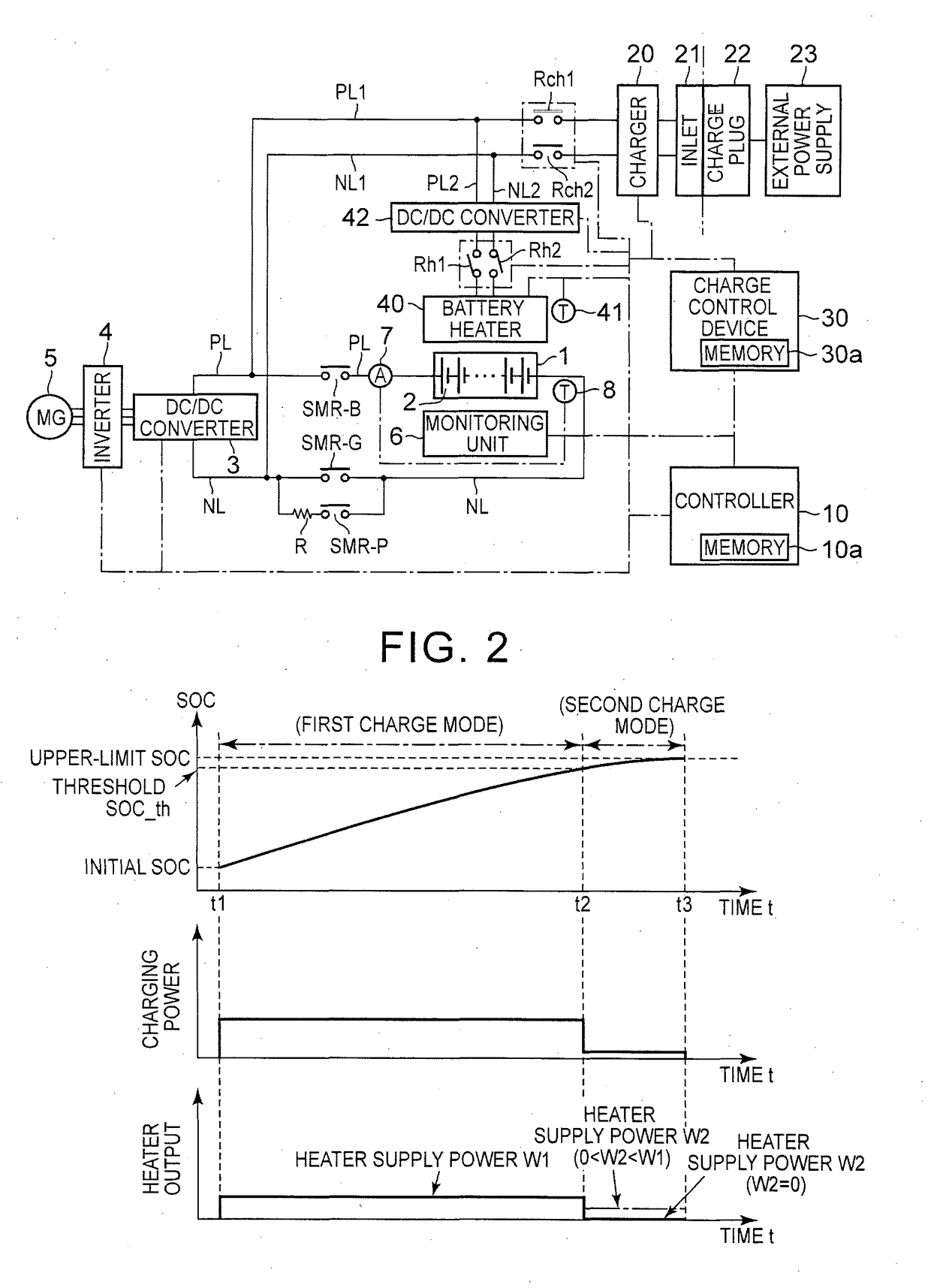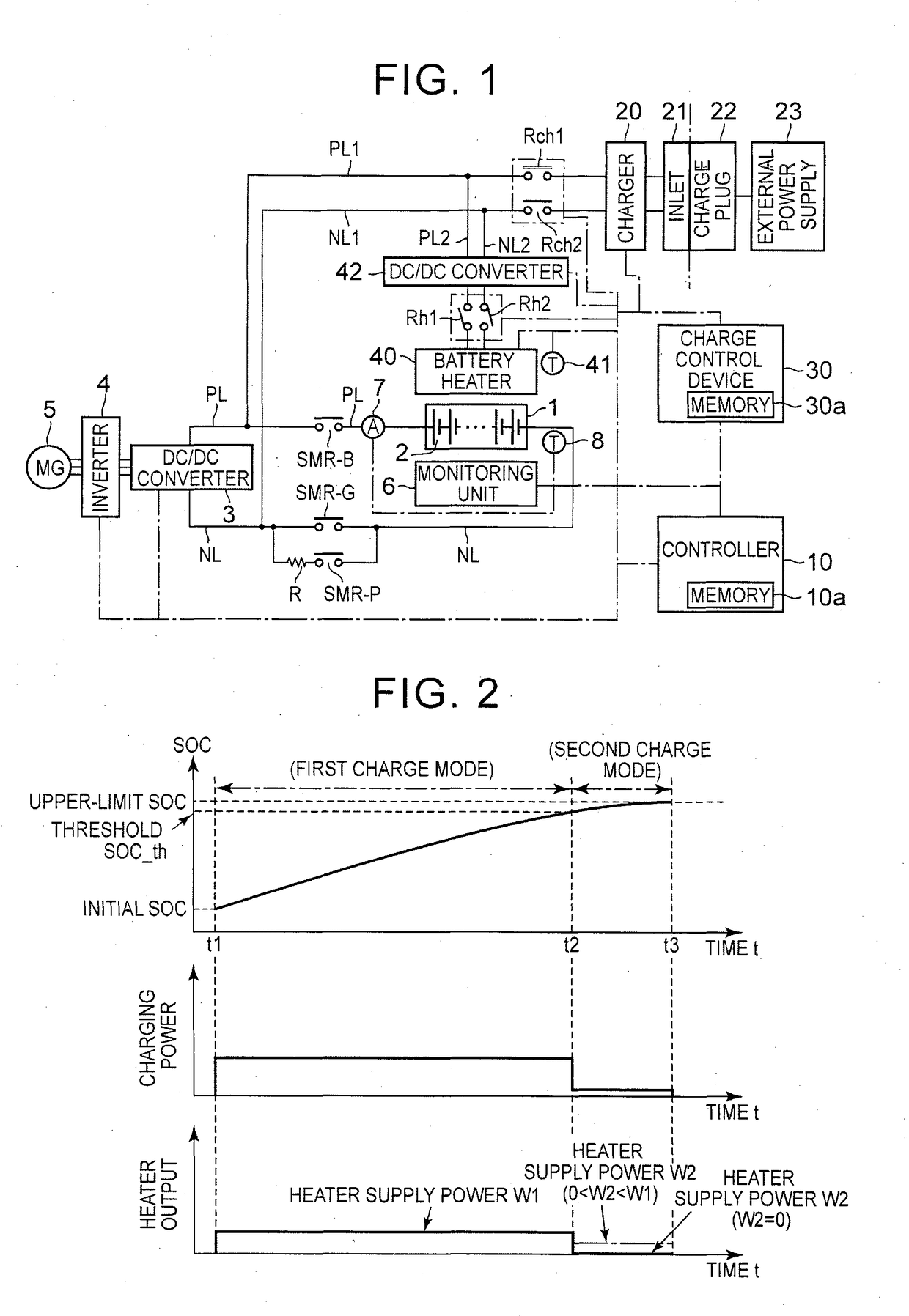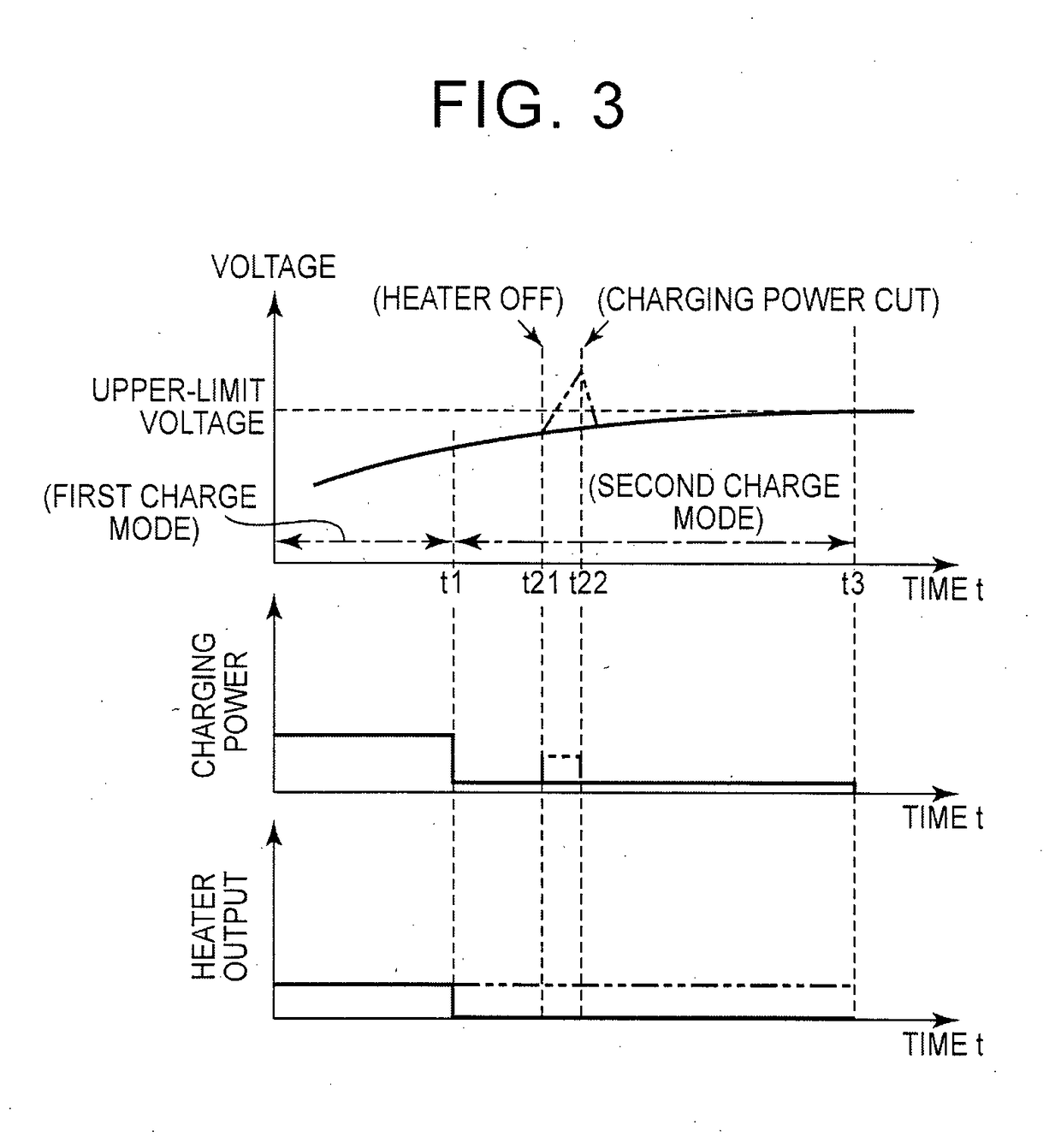Electric power storage system
a technology of electric power storage and battery, which is applied in the direction of secondary cell servicing/maintenance, battery/fuel cell control arrangement, etc., can solve the problems of reducing the input and output of the battery after external charging, the voltage of the battery may exceed the upper limit voltage, and the battery may deteriorate, so as to reduce the deterioration of the battery, the effect of reducing the temperature of the battery and reducing the charging power supplied to the battery
- Summary
- Abstract
- Description
- Claims
- Application Information
AI Technical Summary
Benefits of technology
Problems solved by technology
Method used
Image
Examples
Embodiment Construction
[0032]Embodiments are described below.
[0033]FIG. 1 through FIG. 7 show embodiments. FIG. 1 is a block diagram showing the configuration of a battery system installed on a vehicle. The battery system may be installed on a vehicle, such as a plug-in hybrid vehicle having a function of charging a battery with power from an external power supply, or an electric vehicle.
[0034]The battery system of some embodiments includes a charge / discharge system and an external charge system. In the charge / discharge system, DC power is supplied from a battery 1 to a motor-generator (MG) 5 via an inverter 4, and the battery 1 is charged with regenerative energy during braking of the vehicle. In the external charge system, a temperature regulator is provided for the battery 1, and the battery 1 is charged with electric power from an external power supply 23.
[0035]As shown in FIG. 1, the battery 1 is a battery assembly having a plurality of unit cells 2 electrically connected in series. As each of the un...
PUM
| Property | Measurement | Unit |
|---|---|---|
| electric power | aaaaa | aaaaa |
| temperature | aaaaa | aaaaa |
| power | aaaaa | aaaaa |
Abstract
Description
Claims
Application Information
 Login to View More
Login to View More - R&D
- Intellectual Property
- Life Sciences
- Materials
- Tech Scout
- Unparalleled Data Quality
- Higher Quality Content
- 60% Fewer Hallucinations
Browse by: Latest US Patents, China's latest patents, Technical Efficacy Thesaurus, Application Domain, Technology Topic, Popular Technical Reports.
© 2025 PatSnap. All rights reserved.Legal|Privacy policy|Modern Slavery Act Transparency Statement|Sitemap|About US| Contact US: help@patsnap.com



